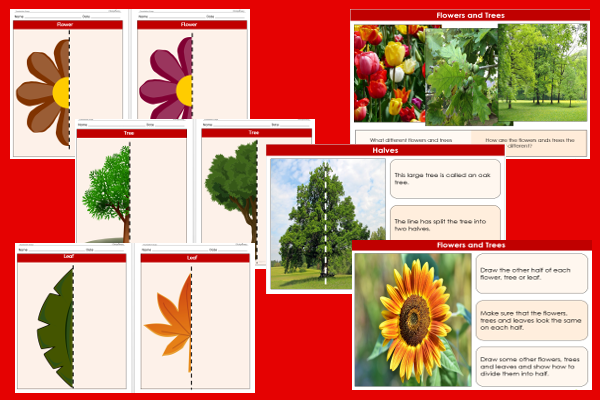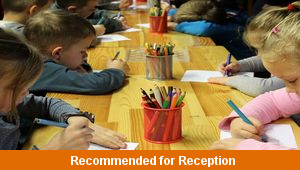Home > Foundation Stage > Numeracy > Number > Fractions > Halving Things
Flowers and Trees

This numeracy teaching pack for the Foundation Stage gets the children to explore and record how to complete diagrams of different flowers and trees to show the matching halves that can be found in a range of shapes.
The class can explain and model how the original shapes can be reformed by joining the two halves of each shape to make one whole example flower, leaf or tree shape.
Download this teaching pack including classroom activities and an interactive presentation to explore and record how to complete diagrams of different flowers and trees to show the matching halves that can be found in a range of shapes
Activities in this teaching pack include worksheets to record how to complete diagrams of different flowers, trees and leafs to illustrate the matching halves of a range of shapes that can be combined together to reform each of the selected garden shapes.
The interactive presentation gets the children to explore how to complete diagrams of different flowers and trees to record matching halves of a range of shapes.
This lesson is part of a numeracy scheme of work to get the children to explain and model how to find and record the halves of some of the different objects that can be used at home and in school. There are teaching activities for shared learning, differentiated worksheets to support independent learning and interactive presentations to introduce concepts and key skills.
-

Halving Things
Explain and model how to find and record the halves of some of the different objects that can be used at home and in school
-

School Friends
Identify and learn classroom routines and organisation by exploring and describing information and likes and dislikes for each of their classmates
-

Classroom
Identify the location and function of different objects used in the classroom and explore how to formulate rules to manage the classroom safely
-

Shape Patterns
Identify, describe and compare the sequences of geometric shapes that have been used to create a range of different patterns
